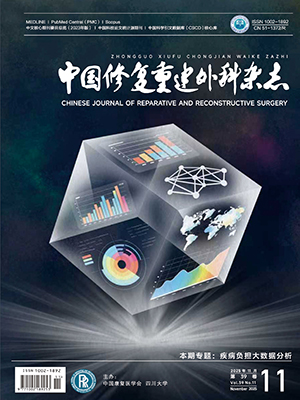OBJECTIVE: To study the effect of subcutaneous implant of peripheral nerve allograft on sciatic nerve regeneration in rats. METHODS: Out of 30 male Wistar rats, 6 were donors and 24 were divided randomly into 2 groups. In experimental group (group A, n = 12), a 15 mm segment of sciatic nerve harvested from donors was separately inserted into subcutaneous compartment on the right thigh; two weeks later, the segment of sciatic nerve in subcutaneous compartment was removed and transplanted into a 10 mm sciatic nerve defect of left, which was made immediately. In the control group (group B, n = 12), a 10 mm sciatic nerve defect was made and immediately repaired in situ on the left thigh. The regeneration of sciatic nerve was examined histologically (after 2, 4, 8, and 14 weeks) and electrophysiologically (after 14 weeks of operation). RESULTS: After 2 weeks of operation, the inflammatory reaction was a little ber in group A than in group B. After 4 weeks, the intensity of the inflammatory reaction was similar between two groups; some collagen fibers proliferated. After 8 weeks, the inflammatory reaction ended and the collagen fibers proliferated obviously. After 14 weeks of operation, the structure of epineurium was in integrity and there was no obvious difference in perineurium and endonurium between two groups. A large number of myelinated nerve fibers and a small number of unmyelinated nerve fibers regenerated. The structure of myelin sheath was in integrity. The number and size of regenerated axon had no significant difference between two groups(P gt; 0.05). The conduction velocity, the peak value and the latent period of motor nerve were no significant difference between two groups (P gt; 0.05). CONCLUSION: The allograft of sciatic nerve inserted into subcutaneous compartment can promote nerve regeneration.
Citation: GAO Ming tang,JIANG Dian ming,AN Hong.. EFFECT OF SUBCUTANEOUS IMPLANT OF PERIPHERAL NERVE ALLOGRAFT ON SCIATIC NERVE REGENERATION IN RATS. Chinese Journal of Reparative and Reconstructive Surgery, 2003, 17(4): 312-314. doi: Copy
Copyright © the editorial department of Chinese Journal of Reparative and Reconstructive Surgery of West China Medical Publisher. All rights reserved




